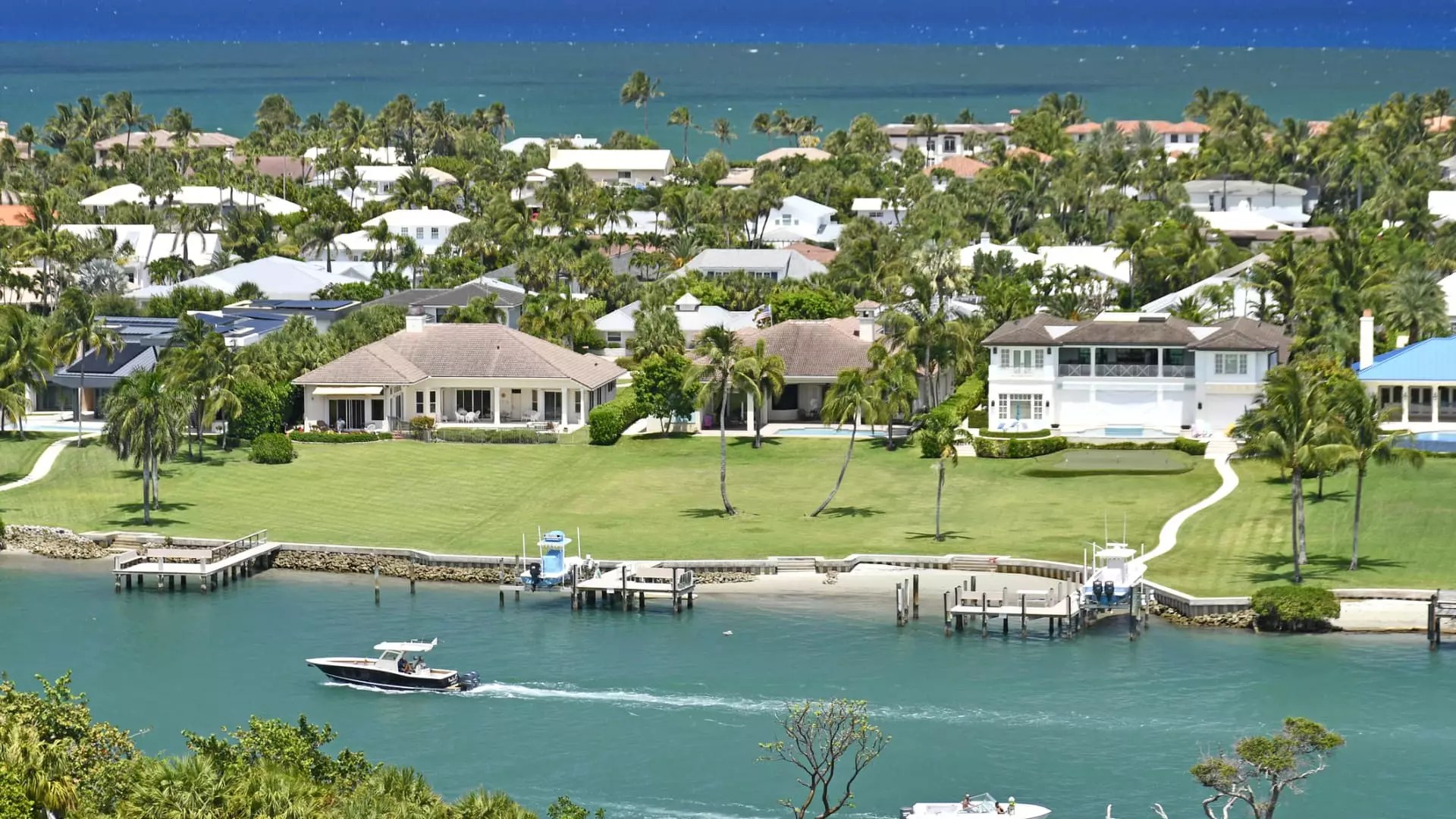The luxury real estate sector is undergoing a radical transformation that most casual observers fail to grasp. Though headlines might emphasize booming sales or market resilience, the deeper truth is far more complex and unsettling. A stark divide is growing—not merely between different price tiers, but between two fundamentally distinct buyer groups: the ultra-rich with tens of millions in assets, and wealthy yet comparatively modest buyers. The former continue to dominate with aggressive, all-cash purchases, immune to the financial anxieties rippling through the broader economy. Meanwhile, affluent but less capitalized buyers are becoming increasingly cautious, constrained by rising borrowing costs and stock market volatility. This bifurcation reflects broader unequal dynamics in wealth and economic opportunity that are only intensifying.
Ultra-Rich Buyers: The New Market Power Brokers
The ultra-wealthy, defined as those with $30 million or more in net worth, have developed a distinct advantage in today’s luxury real estate landscape: liquidity and speed. With cash readily available, these buyers sidestep the heavy burden of exorbitant interest rates, closing deals with speed and leverage unmatched by their less liquid counterparts. Their financial agility allows them not only to maintain but often to increase their real estate holdings during periods of uncertainty, such as trade tensions or recession fears. This trend demonstrates a broader socio-economic reality: enormous wealth grants a form of immunity from the volatility and friction that constrain most economic actors, further consolidating wealth through hard assets like real estate.
Financial Caution Tempering Other Luxury Buyers
Contrast this with the “merely wealthy” buyers—those with significant means but nowhere near ultra-wealthy status—where the environment looks far more cautious. High interest rates have dramatically raised the cost of financing luxury property, dampening enthusiasm and shrinking the pool of qualified buyers. Agents report many clients pushing pause or recalibrating their expectations, delaying purchases while watching market signals closely. This group’s reticence signals a sobering truth: even affluent individuals who once comfortably entered the luxury market are better positioned to wait and negotiate than to compete head-on with all-cash buyers. This squeezed middle tier is emblematic of a growing economic stratification where only the most liquid capital holders can aggressively acquire premium assets.
Luxury Real Estate as Both a Hedge and a Status Symbol
Luxury real estate holds a peculiar dual role for the ultra-wealthy: it is not only a store of value and a hedge against inflation but a conspicuous emblem of status and security. Unlike volatile equities, brick-and-mortar assets convey permanence and control—intangible psychological benefits during jittery economic times. Here, we confront the problem of perception versus reality. While many market participants bank on real estate as a safe haven, the luxury market itself is not immune to fluctuation. Recent data shows an uneven performance, with declines in some segments, particularly attached properties which saw a startling 21% drop in sales. This volatility undercuts any simplistic assumptions about real estate’s infallibility as a shelter investment and illustrates the inherent risks of overconfidence among buyers.
Changing Buyer Preferences: The Rise of Discerning and Demanding Clients
The luxury consumer of real estate in 2025 is no longer content with traditional offerings. Buyers — particularly newcomers to the luxury market — now require cutting-edge technology, spa-like amenities, and seamless indoor-outdoor living experiences. This shift reflects broader societal trends towards wellness and convenience that transcend wealth levels, but its impact is disproportionately felt in the upper echelons of the market where expectations are sky-high. Sellers and developers must pivot quickly or risk obsolescence, marking a sea change in the luxury property value proposition. This evolution not only challenges sellers to innovate but arguably raises the barrier to entry, pushing the luxury real estate market into an even narrower, more exclusive circle.
Market Volatility: A Reality Check for the Center-Right Perspective
From a center-right liberal standpoint, the current luxury real estate environment presents critical lessons about market dynamics and wealth inequality. The success of ultra-wealthy buyers does not come without consequences. Their capacity to leverage cash to shape market conditions exacerbates economic disparities and limits competition, raising concerns about concentrated economic power and its societal effects. At the same time, the prudence of the wider affluent group reflects a necessary respect for market discipline and risk management often overlooked in more speculative cycles. Encouraging responsible borrowing and investment behavior, alongside policies that promote broader wealth creation outside of exclusive asset bubbles, aligns with a sustainable vision for economic vitality and opportunity.
The New Reality of Wealth Preservation
Wealth preservation through luxury real estate is no longer a monolithic guarantee. The current environment demands shrewdness not just from buyers, but from industry players and policymakers who must navigate an increasingly segmented market. Ignoring the divide—pretending the market is uniformly prosperous—risks overinflating bubbles that could destabilize broader economic confidence. The spotlight on all-cash transactions and shifting buyer preferences serve as bellwethers for deeper structural changes within capital allocation practices among the wealthy. The elite continue to compound their advantages, while others adjust their strategies more cautiously, emphasizing liquidity, negotiation, and selective spending—all subtle but profound indicators of a market carving itself into distinct camps with unequal access and different risk appetites.


Leave a Reply